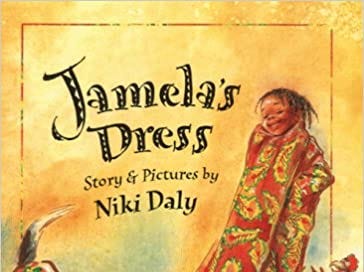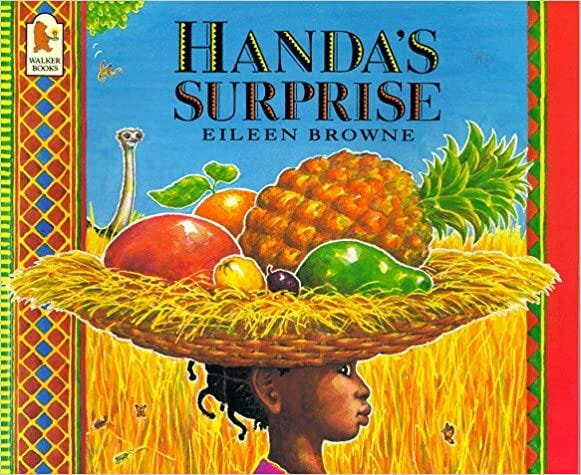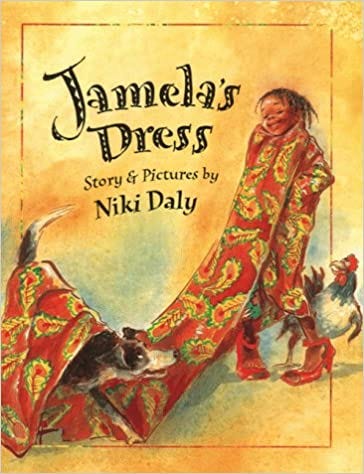Handa's Surprise: maybe not the African delight you think it is
An indirect introduction to my PhD thesis
Cover of Handa’s Surprise by Eileen Browne (1999)
Cover of Jamela’s Dress by Niki Daly (1999)
Last Saturday at work I had a conversation with a colleague who wanted to “draw on my expertise” based upon the fact that I am currently pursuing a doctorate in children’s literature based on the thesis that contemporary children’s literature on Africa is entrenched in neocolonialism and therefore narratives are steeped in themes of poverty, hardship and tragedy and portray Africans as without self-determination and unwilling or unable to embrace modernity. The conversation went as follows:
Colleague (C): Can I please draw on your knowledge of children’s literature?
Me (M): Sure
C: My Saturday Assistant and I were talking about Handa’s Surprise [popular children’s picturebook published in 1999 set in Africa]
M: Okay
C: We think it’s racist
M: Okay [smiling] tell me more
C: Well, the illustrator has shown a very skewed image of Africa
M: Well, as you know this is what my thesis is based upon and in fact Handa’s Surprise is one of my chosen texts. It shows a limited view of Africa, set in a village with lots of wild animals around. It is often the only book that children are exposed to in early years education that features any African country. The only credit I can give to the author is that she did research in Kenya and does produce some naturalistic images of an African village. Interestingly enough, in the same year that Handa’s Surprise was published another picturebook Jamela’s Dress by Niki Daly also came out. It featured a South African town-dwelling girl but didn’t receive nearly as much exposure as Handa’s Surprise. The British publishing industry seems to perpetually promote this primitive image of Africa
C: Jamela’s Dress, I think I’ve heard of that
M: It’s a wonderful book featuring a little girl called Jamela who gets into some mischief with her mother’s dressmaking fabric, but it all turns out okay when a family friend takes a photograph of her. She wanders through the streets with the fabric passing people she knows including a mechanic
C: Mmmm…a photographer and a mechanic. So this book shows an African country embracing basic technology?
M: Exactly. Whereas Handa’s Surprise does not. And a new Handa story has just come out, Handa’s Noisy Night. It features Handa in a sleepover with her friend Akeyo, and they are fortunate enough to be allowed to sleep in their own “hut”. And the night is noisy because of…you guessed it…wild animals!
C: Oh God!
M: I know
For the record, I don’t agree that the book is racist, but shows stereotypes and tropes associated with Africa that might lead to racist attitudes. I refer to my earlier comment about Eileen Browne researching the environment in Kenya. I do get so tired though of Africans in children's literature being shown predominantly living in rural environments only a hop, skip and a jump away from wild animals, it’s so hackneyed. There are quite a few children’s books that will feature in my thesis originally considered benign and sympathetic portrayals of Africa that are anything but. I will share my disappointments in poor depictions of Africa in children’s literature and the media here as I progress with my research.
WATCH THIS SPACE!






Interesting stuff. looking forward to your next post!